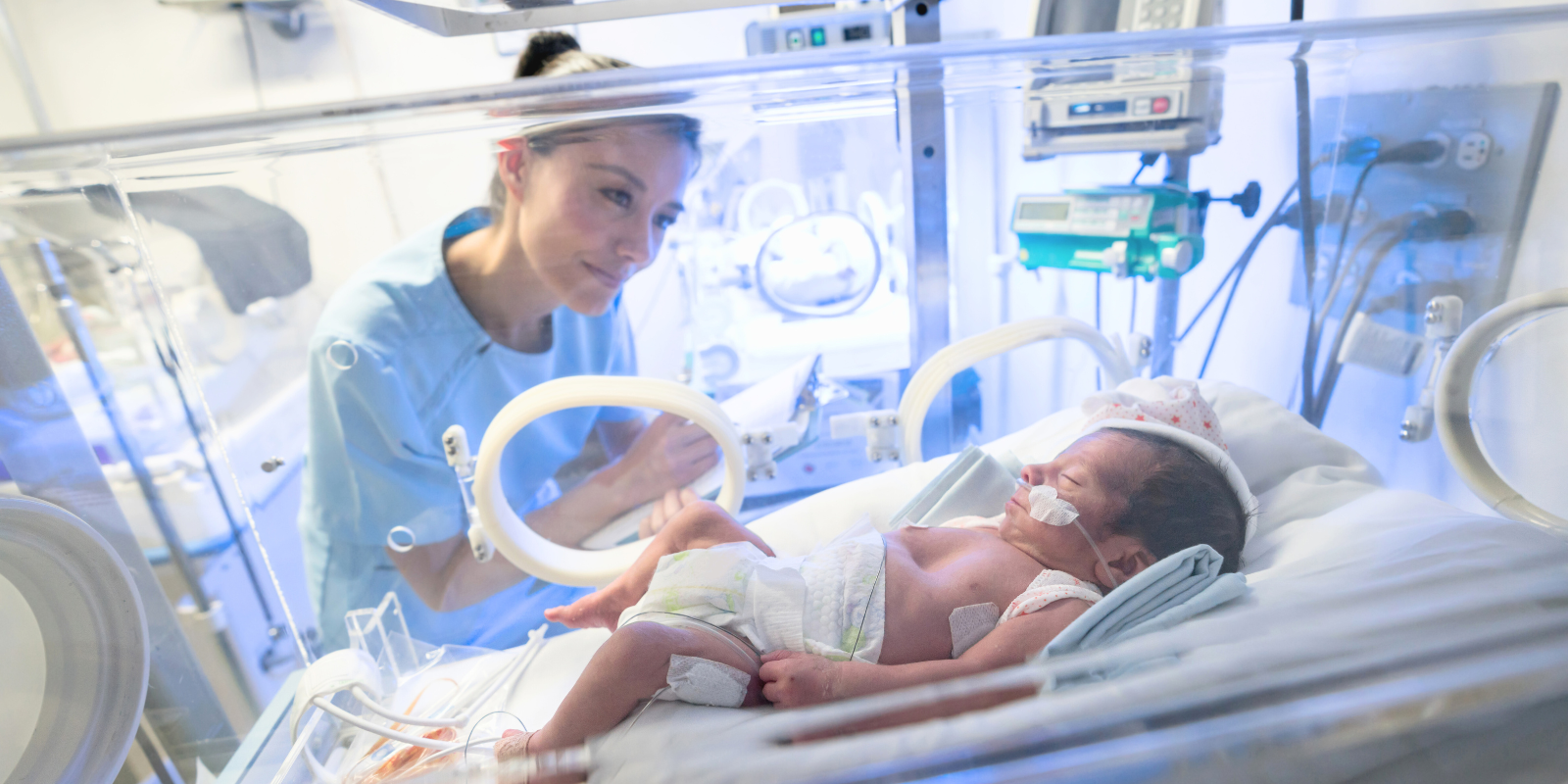Major risk factors for ROP are low birth weight and low gestational age. Why are these risk factors specific to ROP and are there other risk factors that may indicate a baby will develop ROP?
Retinopathy of prematurity affects the back layer of the eye called the retina. When babies are born prematurely, the blood vessels in the retina have not finished growing. In ROP, blood vessels can grow in the wrong direction and location. Instead of growing from the back of the eye toward the front along the retina, vessels in ROP can grow into the middle of the eye. These abnormal vessels can pull the retina off the eye, known as a retinal detachment, which can cause blindness.
In the U.S., ROP is screened in babies who are born before 31 weeks of gestation or who are born small and weigh less than 3.3 pounds at birth. These are babies who did not have enough time in the womb for vessels to grow or something was affecting their overall growth, including blood vessels.
In other parts of the world, ROP can sometimes be seen in bigger and older babies, as screening criteria depends on the country and NICU care.
Other risk factors include high unmonitored oxygen therapy, multiple births (twin, triplet, etc.), and other systemic complications like infection and respiratory illness.
How do pediatric ophthalmologists diagnose ROP? What kind of signs are they looking for in the eyes?
Pediatric ophthalmologists look into the back of the baby’s eye to examine the vessels in the retina. Eye drops are used to dilate the pupil, and a bright headlamp and special instruments are used to keep the eye open and move the eye to see where the vessels are. Photos are taken with a special camera to document how vessels grow.
ROP is described by stages, zones, and appearance of vessels.

What does treatment look like for this condition?
Not all babies with ROP need treatment. Only about 10% may end up needing medical intervention. For the rest, abnormal vessels go away with time.
For those that do need treatment, an ophthalmologist can inject medicine into the eye. Anti-vascular endothelial growth factor (anti-VEGF) therapy helps shrink the abnormal vessels and allows them to change to grow out more. Some babies may need multiple injections to fight the abnormal vessels.
Laser surgery is also an option for some babies. This is done on the part of retina where there are no blood vessels yet. It is very effective in keeping the blood vessels from pulling the retina off the eye.
Sometimes babies need both medicine and laser treatment. In some cases, if a retinal detachment occurs, surgery may be necessary to put the retina back in place.
What are the lasting effects of ROP? Does it impact vision for life?
ROP is the leading cause of preventable childhood blindness in the U.S. and across the world. If ROP is not caught in a timely manner, it can cause retinal detachment, permanent scars in the retina, and blindness. Surgery can be performed to save the eye and vision, but it can be difficult if permanent scarring already occurred.
As I’ve mentioned, ROP goes away in most babies, but we need to watch the vessels until they are fully grown. This is why babies need multiple eye exams over the first several months of their lives, both in the NICU and after being discharged from the hospital. Doing an eye exam is the only way to diagnose and treat ROP.
It is very important for parents to bring their babies for ROP exams so we can give them the best chance at recovering and having healthy eyes and vision.






